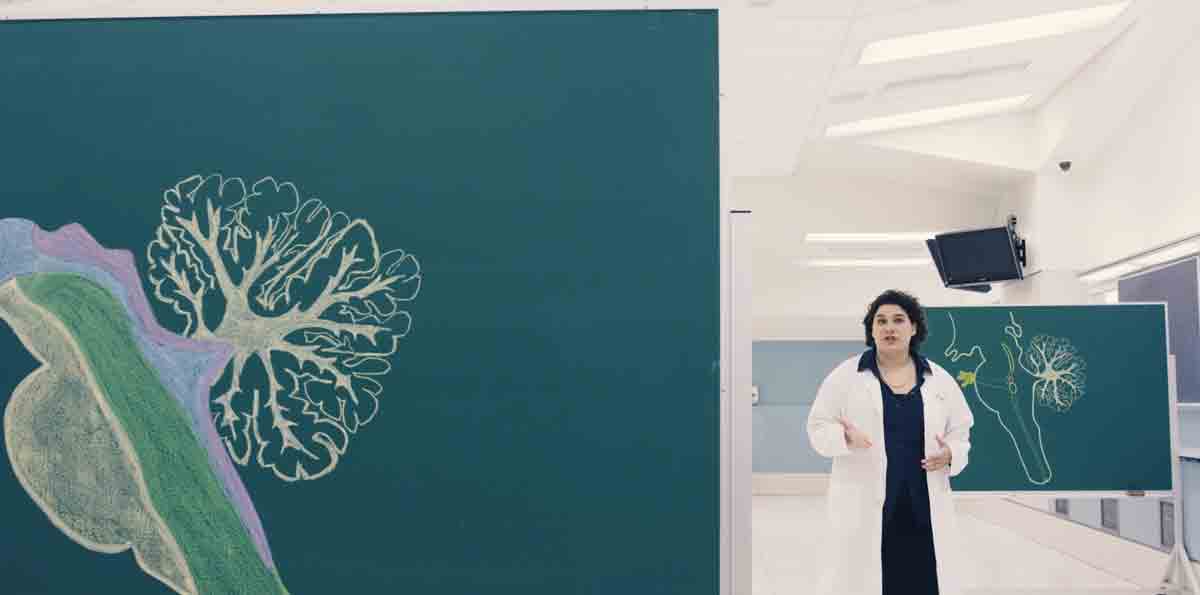When Claudia Krebs, professor of teaching in the Faculty of Medicine at UBC, first thought of making videos for a course in neuroanatomy, her focus was on re-thinking how students are taught in medical school. “Neuroanatomy is traditionally a course that is very difficult for the students. I wanted to break it up and give them the content in manageable pieces,” said Krebs. With MEDIT Media groups, she created nine videos accompanied by 20 modules and posted the content online for public access.
She never foresaw how popular her videos would become. “The materials just went viral. They went everywhere. There are a lot of universities now using them,” she explained. Since its first iteration, Krebs has produced two more seasons of the Neuroanatomy series.
Understanding the medium
Krebs didn’t know much about making digital media when she embarked on this project. The first time she sat down to write a script, it was almost written like a textbook. “That’s what we knew how to do – how to write a lecture, how to write a textbook. But doing a video or a module is really different and you have to play to the strengths of the medium,” she added.
Krebs and her team tried to get the videos to be interesting for the viewer by introducing hooks and making them relatable. Having the help of experts in the medium was instrumental for that. According to Krebs, without a team of experienced people, it wouldn’t have worked. But once the professors and others involved understood the medium, they were able to stretch the limits of what the videos could do.
The impact of teaching in the open
The professor hopes the videos are helping take away student neurophobia, or the “fear of medical students for everything that is brain related.” By having the content available to students, she is hoping to make the material more accessible and understandable.
Krebs gets emails almost every week from people around the world who are using the videos and other course materials. The resources are currently used as a formal part of the curriculum in several countries, including the Netherlands, where it’s used as part of the medical undergraduate curriculum.
“When you look at the hits that the website and the videos get online it’s really from all over the world,” she said. “I think that can fill an institution like UBC with a lot of pride, that what we’re producing actually has an impact for education everywhere.”
Krebs was particularly surprised and thrilled when she received an email from somebody in Baghdad, Iraq, who had accessed these videos and had some follow up questions. It was evidence of the global reach of the project as well as the benefits of open education.
“The more an institution opens itself to the world the better it is for the institution. The more we are aware of the challenges that other universities have and the more we can reach out and collaborate as partners to work on global issues, such as access to information and access to education, the better it is for everyone,” she concluded.
Open education as a social responsibility
More broadly, Krebs believes open education is the future. She sees it as a social responsibility “I don’t think that we can stay in our ivory tower and keep the knowledge to ourselves. It’s not within the tradition of what academia and universities are. We’ve always shared our knowledge and now with digital media it’s become easier than ever,” she added.
Because the videos are accessible everywhere, Krebs has built up a network of collaborators who are also interested in creating digital media for education and medical education, specifically in anatomy. They have been working together to create a repository of resources that can be shared with everyone.
“We’re all really passionate about open education and not hiding things behind a firewall or a university access code or something like that so that we can share with everyone,” she said. They have even reached out to universities in developing countries to offer collaborating with them. Currently the group has contacts in Africa. These contacts can already access Krebs’s online materials and she’s looking at ways of collaborating to create media locally that can in turn be used at UBC.
“When you look at access to post-secondary education worldwide, there are a lot of countries who can’t afford to produce media like this. We can and so we should share that information and with that facilitate access to post-secondary education for anyone.”
